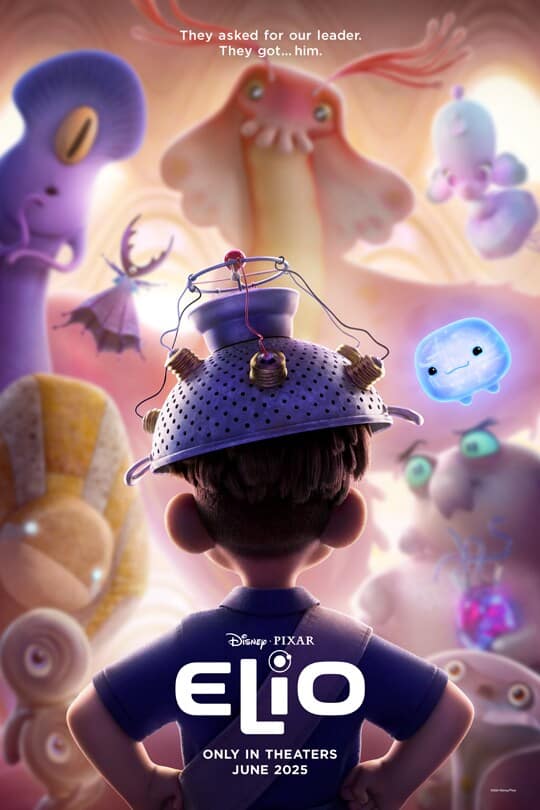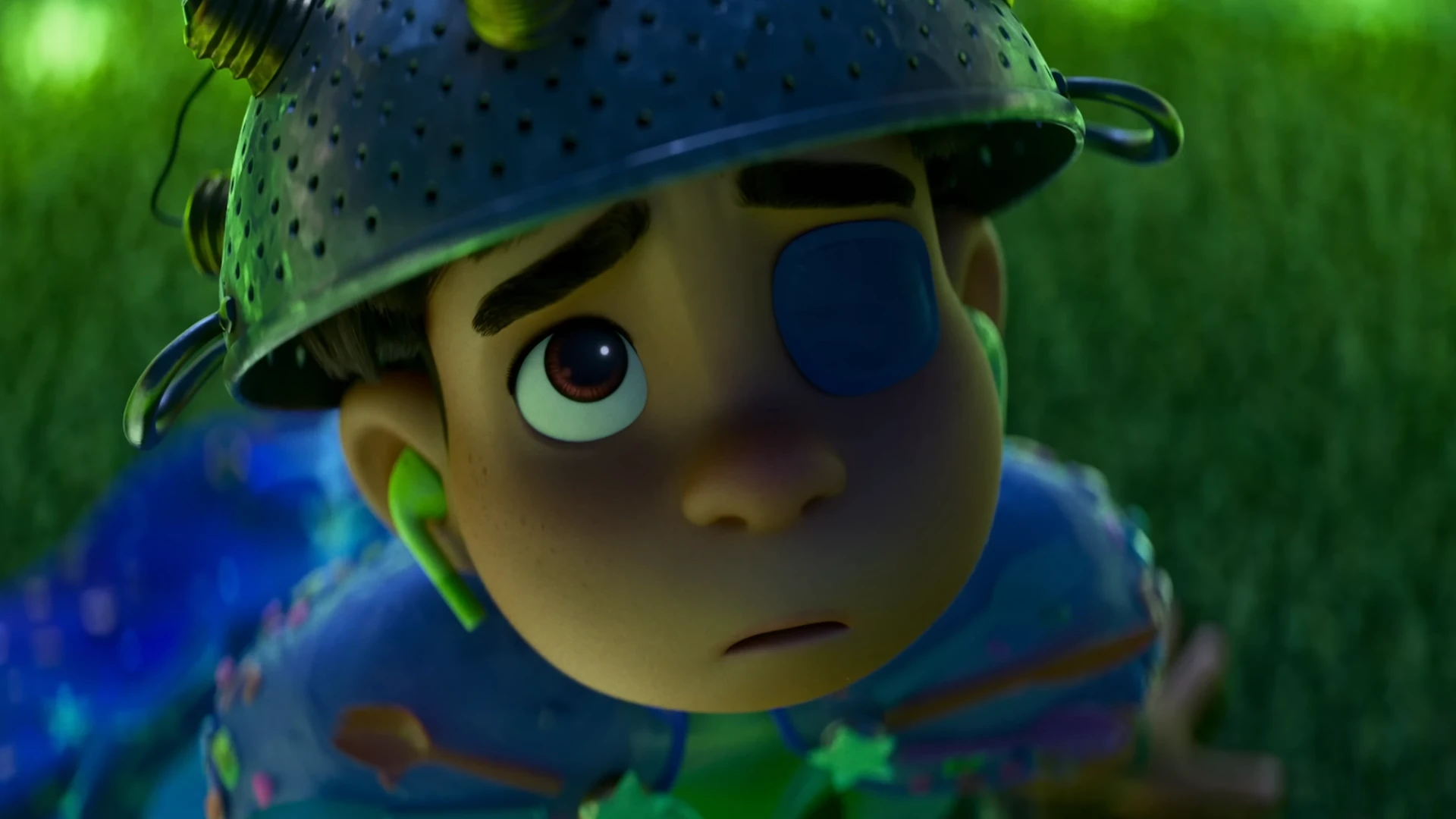Pixar’s upcoming sci-fi adventure Elio has been delayed yet again—this time for a strategic reason. Disney has shifted the animated film’s release from June 13 to June 20, 2025, deliberately moving it out of the way of DreamWorks’ highly anticipated live-action How to Train Your Dragon reboot, which hits theaters on the same weekend as Elio’s original date.

Pixar Delays Elio Again – This Time to Sidestep How to Train Your Dragon Reboot
This isn’t the first time Elio has been pushed. Originally slated for release on March 1, 2024, the film was delayed due to the 2023 SAG-AFTRA strike and internal production challenges at Pixar. While the one-week bump may seem minor, it reflects a bigger trend in Hollywood: studios are becoming increasingly strategic with release dates to avoid box office clashes—especially in the crowded summer blockbuster window.
Why the Delay Matters
The move positions Elio to breathe a bit easier in a competitive theatrical landscape. The How to Train Your Dragon franchise is a proven box office titan with a loyal fanbase, and its 2025 live-action adaptation is expected to dominate its debut weekend. Rather than risk getting overshadowed, Disney is giving Elio its own spotlight the following week—a move that may maximize audience attention and box office returns.
The tactic echoes past Disney maneuvers. The studio previously spaced out the releases of Elemental and Indiana Jones and the Dial of Destiny in 2023 to avoid internal cannibalization. By sidestepping DreamWorks this time, Disney is showing similar caution and calculated risk management.

What Is Elio About?
Directed by Adrian Molina (co-director of Coco), Elio centers around an 11-year-old boy who gets accidentally beamed up into space and mistaken for the ambassador of Earth by an alien alliance known as the Communiverse. The film blends heartwarming coming-of-age elements with galactic adventure and Pixar’s trademark emotional depth.
The film stars Yonas Kibreab (Obi-Wan Kenobi) as Elio and America Ferrera (Ugly Betty, Barbie) as his mother Olga, a top-secret military official working on Earth’s first contact program.
Pixar’s Current Landscape
The delay also gives Elio some breathing room as Pixar recalibrates. After a tough few years with pandemic-era releases and underwhelming box office returns (Lightyear, Onward), Elemental began to reverse the trend in 2023 with a surprising late-summer rebound. Inside Out 2, due in June 2024, is expected to restore more goodwill, giving Elio a better foundation heading into 2025.
Pixar is hoping Elio will help usher in a new creative era, expanding beyond sequels and nostalgia into fresh, original storytelling. The delay may allow for a stronger marketing campaign and give the film a better shot at standing out in an increasingly crowded slate of animated blockbusters.
With Elio now landing a week after How to Train Your Dragon, animation fans can look forward to two major releases instead of having to pick one. It’s a win for audiences—and potentially a smarter move for both studios aiming for maximum box office impact.
Key Takeaways
- Disney has pushed Pixar’s “Elio” release back by one week to June 20, 2025 to avoid direct competition with DreamWorks’ “How to Train Your Dragon.”
- The strategic scheduling change aims to maximize “Elio’s” box office potential by giving it its own opening weekend.
- This represents the second delay for “Elio,” which was originally planned for March 2024 release before being rescheduled to 2025.
Strategy Behind the Elio Release Delay
Disney’s decision to move Pixar’s “Elio” from June 13 to June 20, 2025 reflects careful market positioning designed to maximize the film’s box office potential. This strategic shift demonstrates how release timing impacts a movie’s financial success in today’s competitive entertainment landscape.
Assessing Box Office Competitors
The primary reason for delaying “Elio” was to avoid direct competition with Universal’s “How to Train Your Dragon” live-action remake. Both films target similar family demographics, and releasing them simultaneously would likely split audiences.
Disney executives likely analyzed historical data from previous head-to-head animation battles. When two major animated films release within the same week, they often cannibalize each other’s earnings.
The one-week buffer gives “Elio” breathing room in the marketplace. It allows the initial wave of “Dragon” viewers to see that film first, then potentially turn their attention to “Elio” the following weekend.
This separation strategy has proven effective in previous summer release calendars where studios carefully position their tentpole films to avoid direct conflicts.
Evaluating Franchise Popularity
“How to Train Your Dragon” represents an established franchise with tremendous brand recognition and three successful animated features already in its catalog. The live-action remake builds on this existing fanbase.
In contrast, “Elio” is an original Pixar property without pre-existing audience awareness. The film needs more marketing runway and word-of-mouth momentum to build its audience base.
Disney’s analysis likely considered:
- Franchise loyalty factors: Dragon’s established fanbase vs. Elio’s new IP status
- Target demographic overlap: Both aim at family audiences with children
- Historical performance: Dragon films have consistently performed well
By avoiding direct competition with a proven franchise, Disney gives “Elio” a better chance to establish its own identity in the market rather than being overshadowed.
Timing for Maximum Impact
The new June 20 release date positions “Elio” in a potentially more advantageous slot in the summer movie calendar. This timing maximizes several key factors:
The date falls closer to when many schools begin summer vacation across the US, potentially increasing weekday attendance from families with children. Mid-to-late June typically sees higher theater attendance as summer activities ramp up.
“Elio” will now face different competition – Sony’s “28 Years Later” – which targets an entirely different demographic and won’t compete for the same family audience.
The June 20 release also gives Disney’s marketing team additional time to build awareness for the film after “Dragon” has already made its media splash. This prevents marketing campaigns from drowning each other out.
Hollywood analysts generally view this as a wise strategic decision that protects both films’ potential box office success.
Impact on the Film Industry
Disney’s decision to delay Pixar’s “Elio” to avoid direct competition with DreamWorks’ “How to Train Your Dragon” highlights the strategic positioning that shapes Hollywood’s financial landscape and reveals how studios manage their tentpole releases.
Influence on Hollywood Release Schedules
The delay of “Elio” to June 20, 2025 demonstrates how major studios carefully monitor each other’s release calendars. This strategic scheduling has become increasingly common in Hollywood as studios aim to maximize their films’ box office potential.
Disney’s move reveals the ongoing “chess game” that defines the industry’s approach to theatrical releases. Studios typically avoid placing similar audience-targeted films in direct competition, especially when both are animated features with family appeal.
This pattern affects not just the films in question but creates a ripple effect throughout the release calendar. When a studio giant like Disney shifts a Pixar film, smaller studios may also adjust their schedules to avoid being caught in the competitive crossfire.
Projected Performance of Elio Versus How to Train Your Dragon
Financial analysts predict both films will be significant players at the 2025 box office, but with different strengths. “How to Train Your Dragon” has the advantage of being part of an established franchise with a dedicated fanbase, while “Elio” represents Pixar’s fresh IP with their signature storytelling approach.
Industry projections suggest:
Opening Weekend Estimates:
- “How to Train Your Dragon”: $65-75 million
- “Elio”: $50-60 million
Pixar’s strategic one-week delay allows both films breathing room to capture audience attention. This separation increases the likelihood that families might see both films rather than choosing between them.
The performance of both films will be closely watched as indicators of audience appetite for theatrical animation in a post-pandemic landscape where streaming has transformed viewing habits.
Marketing and Promotion Dynamics
Disney’s decision to delay Pixar’s “Elio” represents a strategic marketing move in a competitive release landscape. When major films compete for similar audience demographics, studios must carefully plan their marketing campaigns to maximize visibility and box office potential.
Leveraging Major Film Premieres
Film studios invest millions in premiere events to generate buzz for upcoming releases. With “Elio” now avoiding direct competition with DreamWorks’ “How to Train Your Dragon,” Disney gains a clearer marketing runway for their space adventure film.
The Hollywood premiere circuit typically becomes crowded during summer months when blockbusters dominate. By moving “Elio” to June 20th, Disney creates breathing room between major franchise events that compete for media attention.
DreamWorks’ established “Dragon” franchise brings built-in audiences and marketing momentum that could have overshadowed “Elio” as a new intellectual property. This strategic separation allows Disney to build its own distinct marketing identity rather than competing for the same media coverage and audience attention.
The Role of Trailers and Teasers
Trailer release timing becomes particularly crucial when films target similar demographics. Disney likely factored the trailer release schedule into their decision to delay “Elio,” avoiding audience confusion between two animated family films.
Studios typically create a calculated release pattern for promotional materials:
- Teaser trailers (12+ months before release)
- First full trailer (6-8 months before)
- Second trailer (3-4 months before)
- Final trailer (4-6 weeks before premiere)
By shifting “Elio” one week later, Disney creates space for its marketing materials to stand alone in viewers’ minds. This prevents the risk of audiences confusing elements from two space-themed animated adventures being promoted simultaneously.
The delay also allows Disney to potentially leverage New York media markets without competing directly with DreamWorks’ promotional tour, creating clearer audience messaging for both films.
Cultural and Cinematic Significance
The rescheduling of Pixar’s “Elio” reveals significant patterns in how major studios navigate competitive release dates. This decision highlights both genre dynamics and historical box office strategy.
Exploring Genre Influence on Film Success
Animation giants Pixar and DreamWorks have been carefully positioning their films for maximum audience reach. Disney’s decision to delay “Elio” demonstrates how sci-fi animated features require strategic placement in today’s market.
The move acknowledges DreamWorks’ “How to Train Your Dragon” live-action adaptation carries significant franchise power that could overshadow a new IP like “Elio.” Family-friendly sci-fi comedies often struggle when competing directly against established fantasy franchises.
Pixar’s space-themed adventure must now carve its own path in a summer filled with other notable releases including “Super/Man: The Christopher Reeve Story” and “The Wild Robot.” This genre-specific positioning acknowledges how audience preferences for familiar stories can impact box office performance.
Connecting to Cinema History
This scheduling dance between studios follows a long Hollywood tradition. Disney’s avoidance of direct competition mirrors historical precedents dating back to classic film era rivalries.
In the 1930s, studios carefully scheduled prestige releases to avoid competition. “Snow White,” Disney’s first animated feature, established a pattern that continues with modern animation studios.
The SAG-AFTRA strikes of 2023 created additional industry disruption, forcing studios to reconsider their entire release calendars. This labor action echoes previous Hollywood strikes that reshaped release strategies.
Pixar’s move away from its traditional Father’s Day weekend release window also signals a willingness to break with tradition when facing strong competition from properties like “Daughters” and “Nickel Boys” that might target similar demographics.
Frequently Asked Questions
The delay of Pixar’s Elio has prompted several key questions from fans and industry observers. The strategic move to avoid direct competition with Universal’s How to Train Your Dragon has sparked discussions about release timing and box office potential.
What factors influenced the decision to delay the release of Elio?
Disney pushed Elio back by one week primarily to avoid direct competition with Universal’s How to Train Your Dragon. The original release date of June 13, 2025 would have put the two animated features head-to-head at the box office.
This isn’t the first schedule change for the film. Elio was previously moved from March 1, 2024 to June 13, 2025 due to impacts from the writers’ and actors’ strikes.
How will the new release date of Elio impact its box office success?
The new June 20, 2025 release date potentially gives Elio a clearer runway for success without immediate competition from another major animated film. However, some fans have questioned whether a single week’s delay will be sufficient to avoid the competition.
The summer release window remains advantageous as families often seek entertainment options during school vacations. This timing could still maximize Elio’s audience potential despite the minor adjustment.
What are the expected advantages of avoiding the release window of How to Train Your Dragon?
By avoiding direct competition with How to Train Your Dragon, Elio won’t have to split the family audience demographic during its crucial opening weekend. This strategic move aims to prevent a box office battle between two highly anticipated animated features.
The one-week buffer may allow Elio to benefit from stronger marketing focus and more available premium format screens like IMAX and 3D. These advantages could translate to higher per-screen averages and overall revenue.
Can viewers anticipate any major changes or improvements to Elio due to the delay?
The one-week delay is unlikely to result in significant content changes to the film itself. This short postponement appears to be purely a strategic release calendar decision rather than for creative purposes.
Unlike the earlier delay from 2024 to 2025, which provided substantial additional production time, this adjustment is focused on market positioning. The film’s storyline, animation quality, and creative elements are expected to remain as originally planned.
How have previous releases within the same timeframe as How to Train Your Dragon fared?
Previous animated films that opened against established franchises have often struggled to maximize their box office potential. The history of summer animated releases shows that spacing out major family films typically benefits all parties.
The competitive summer marketplace has previously seen casualties when similar audience-targeted films opened too close together. Disney’s strategic calendar adjustment suggests they’ve learned from past industry experiences.
What are audiences saying about the postponement of Elio’s release date?
Fan reactions to the delay have been mixed. Some social media comments question whether a single week will make a meaningful difference in avoiding competition.
Other fans have expressed understanding of the decision, with some Facebook discussions indicating acceptance of the strategic move to avoid competing directly with the How to Train Your Dragon film on the same weekend.







